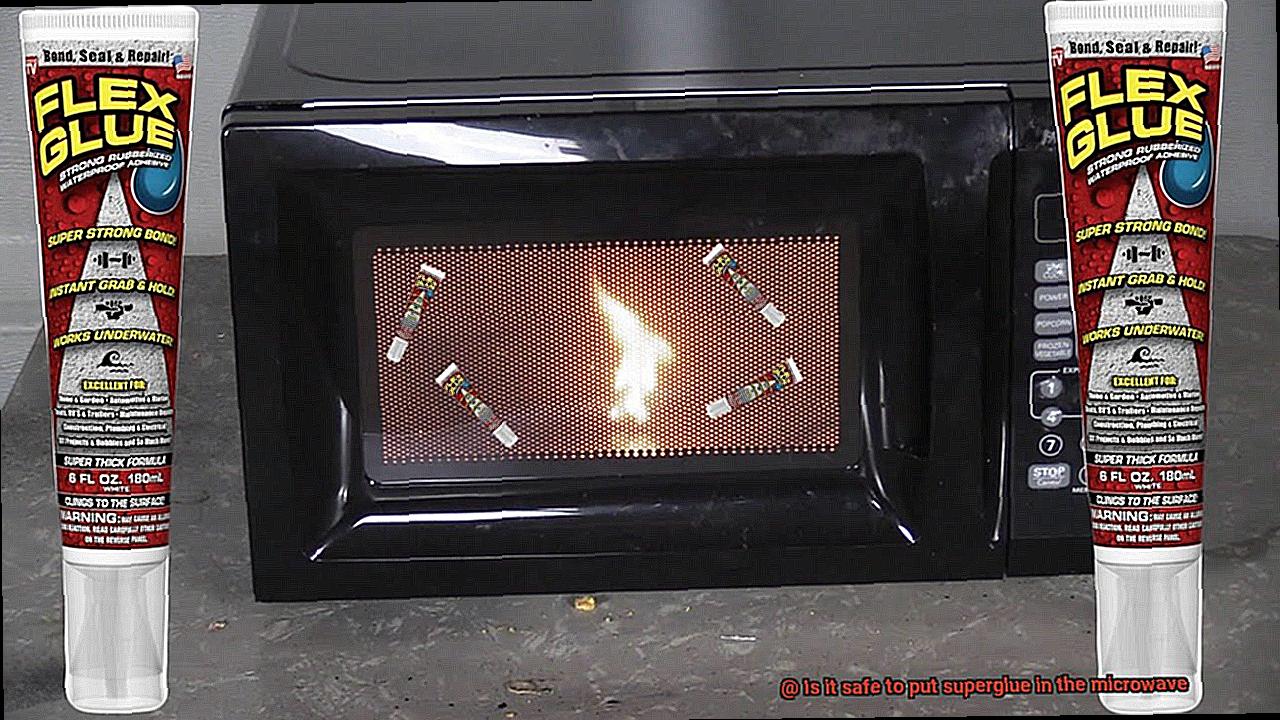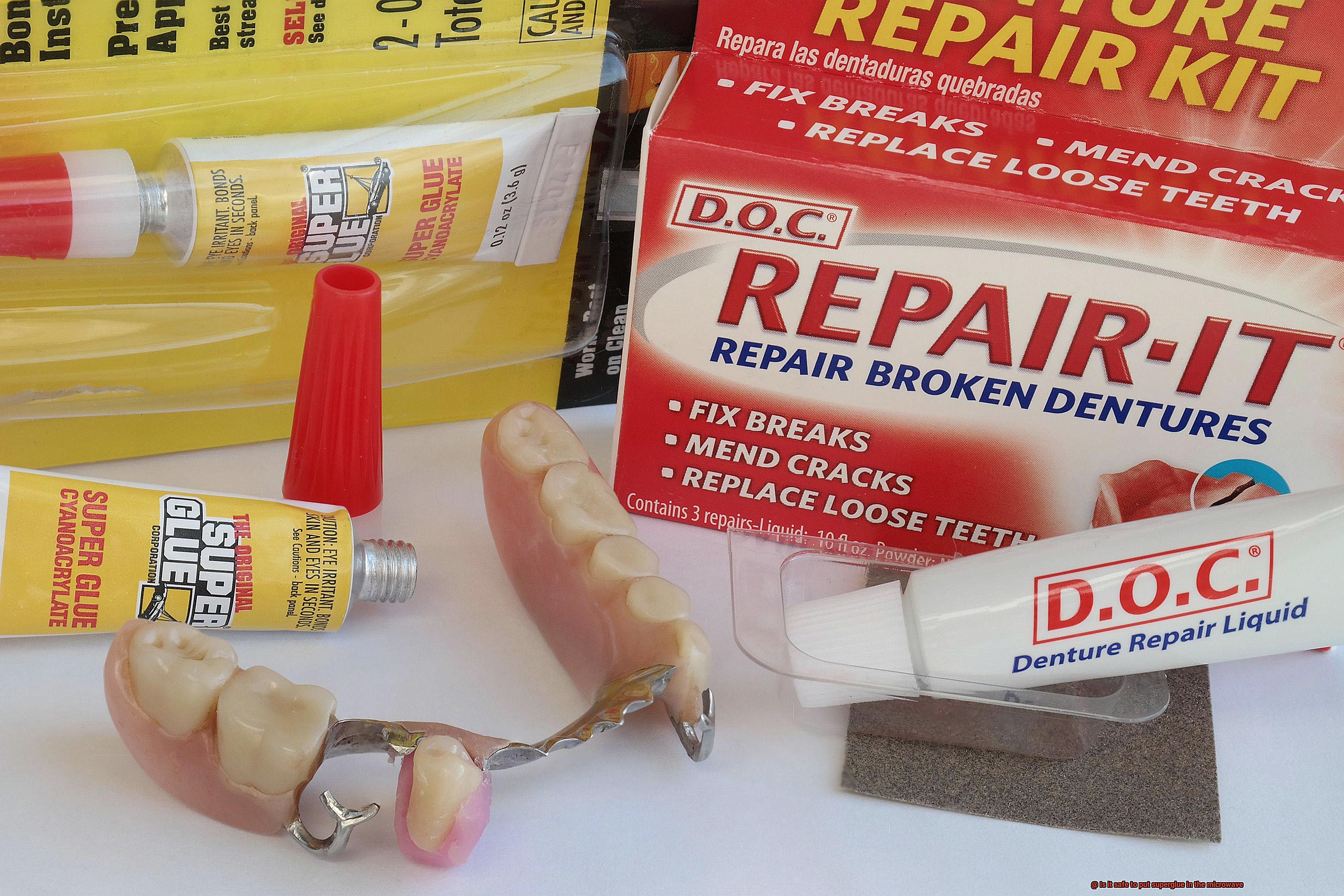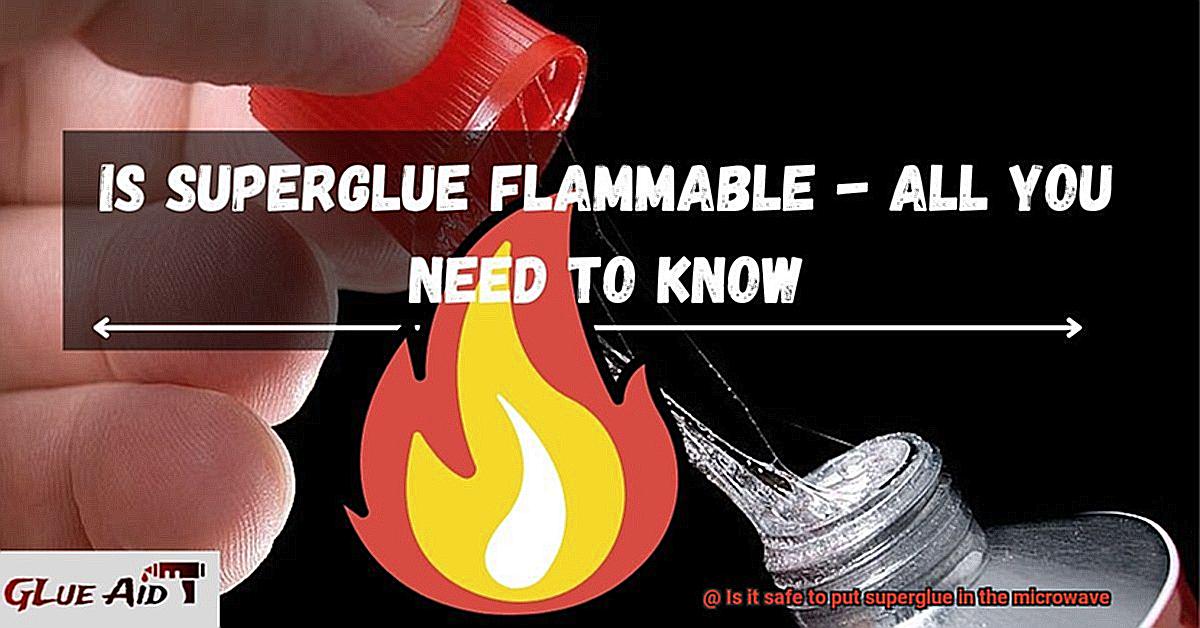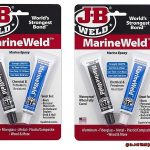Microwaves are like superheroes in our kitchens, saving us time and effort by heating up meals in a jiffy. But what if you need to fix something with superglue and the microwave is calling your name? You might wonder, “Is it safe to put superglue in the microwave?”
Superglue is a potent adhesive that can bond almost anything together, but it also has its dangers. Heating superglue can release toxic fumes that can harm your health. So, combining it with microwaving seems like a recipe for disaster.
But don’t panic. In this blog post, we’ll explore whether you can safely use superglue in the microwave and how to do it without risking your well-being. We’ll delve into the science behind superglue and why microwaving it can pose a threat. Plus, we’ll share some practical tips on how to use superglue safely in the microwave – from selecting heat-resistant materials to determining the optimal microwave time.
If you’ve ever considered using your microwave as a DIY tool or wondered about the safety of combining two powerful substances like superglue and microwaves, keep reading. We’ve got all the answers on whether it’s safe to put superglue in the microwave and how to do it confidently.
What is Super Glue?
Contents
- 1 What is Super Glue?
- 2 How Does the Microwave Work?
- 3 The Dangers of Putting Super Glue in the Microwave
- 4 Potential Health Risks of Inhaling Fumes from Super Glue
- 5 Potential Risk of Melting and Fire Hazards
- 6 What to Do If You Accidentally Put Super Glue in the Microwave
- 7 Alternatives to Using Super Glue
- 8 Conclusion

Super Glue, also known as cyanoacrylate adhesive, is a remarkable invention that revolutionized the world of adhesives. It was discovered in 1942 by Dr. Harry Coover, who was working on creating a clear plastic for gun sights during World War II. However, he stumbled upon a compound that stuck to everything it touched and eventually realized its potential as an adhesive.
The secret to Super Glue’s success lies in its fast-acting formula that reacts with moisture in the air and on the surface of the material it is applied to. This causes the glue to polymerize and harden rapidly, creating an incredibly strong bond between two surfaces. This impressive feature makes it a popular choice for repairing household items such as ceramics, jewelry, and even toys.
Super Glue is a versatile adhesive that can be used on various materials such as metal, plastic, rubber, leather, and wood. It can also be used in medical applications like closing cuts or wounds. However, it’s crucial to use caution when handling this powerful adhesive. Ingestion or inhalation of Super Glue can be harmful, and contact with skin can cause irritation or burns. Therefore, wearing gloves and using Super Glue in a well-ventilated area is highly recommended.
It’s fascinating to note that although Super Glue is an excellent adhesive, it should never be put in the microwave. The electromagnetic radiation generated by microwaves can cause toxic fumes to release from the glue or even lead to melting or explosion. Thus, it’s best to avoid putting non-food items like Super Glue into the appliance.
How Does the Microwave Work?
At the heart of the microwave lies the magnetron, which generates high-frequency radio waves. These waves travel through a waveguide and enter the food compartment, where they bounce around and are absorbed by water molecules in the food.
The reason water molecules are so important is that they’re polar, meaning they have a positive and negative end. As the radio waves pass through the food, they cause these polar molecules to vibrate rapidly, generating heat that cooks our food from the inside out.
This is why microwaves are different from conventional ovens, which cook from the outside in. Since most foods contain water, microwaves can quickly and efficiently heat and cook a variety of dishes.
It’s crucial to remember that microwaves can be dangerous when used improperly. Never put anything flammable or dangerous in your microwave, such as super glue. The electromagnetic radiation can cause rapid heating of the glue, leading to severe consequences.
To summarize, microwaves use high-frequency radio waves to cook and heat food by absorbing energy from water molecules. This makes them a quick and efficient way to prepare meals. However, always practice caution and safety when using your microwave to avoid any potential hazards.
The Dangers of Putting Super Glue in the Microwave
Super glue is a powerful adhesive that can fix almost anything in a jiffy. But when it comes to heating it up in the microwave, the answer is a resounding NO. While microwaves are a convenient way to heat up food, they can also be incredibly dangerous if not used properly.

First and foremost, super glue is not designed to be exposed to high temperatures, such as those found in a microwave. When heated, the glue can release toxic fumes into the air. These fumes can be harmful to both humans and pets, and can even cause damage to the microwave itself by corroding its interior components.
But that’s not all – super glue is also highly flammable. It contains chemicals such as cyanoacrylate that can easily ignite and cause serious damage or injury if heated for too long or at too high of a temperature. The glue can also adhere to the interior of the microwave, making it difficult or impossible to remove and potentially rendering it unusable.
To summarize, here are some reasons why you should never put super glue in the microwave:
- It can release toxic fumes that can harm you and your pets
- It can corrode the interior components of the microwave
- It is highly flammable and can easily catch fire
- It can adhere to the interior of the microwave, making it difficult or impossible to remove
Potential Health Risks of Inhaling Fumes from Super Glue

This popular adhesive can be a lifesaver when it comes to fixing things, but it can also pose serious threats to your health if not used properly.
When super glue is heated, it emits toxic fumes that contain cyanoacrylate, a chemical that can cause irritation to the eyes, nose, and throat. Inhaling these fumes can lead to respiratory problems, headaches, dizziness, nausea, and even unconsciousness. In some cases, it may even trigger an allergic reaction.
The worst part is that these symptoms may not be immediately noticeable, making it challenging to detect the problem. But fear not. You can take preventative measures to avoid inhaling these toxic fumes.
To protect yourself from these potential health risks, always use super glue in a well-ventilated area or wear a respirator mask. Avoid heating or putting it in the microwave as this increases the likelihood of toxic fumes being emitted. By taking these simple precautions, you can safely enjoy all the benefits of this handy adhesive without putting your health at risk.
Potential Risk of Melting and Fire Hazards
While it might be tempting to put the glue in the microwave for a quick-drying process, this could lead to disastrous consequences.
Firstly, superglue is made up of cyanoacrylate, which is an adhesive that reacts with moisture in the air to form a strong bond. However, when exposed to heat, this bond can break down and cause the glue to melt. This can not only create a sticky mess but also potentially damage your microwave. Imagine being stuck with a ruined appliance due to one careless mistake.
Secondly, superglue is flammable, which means that exposing it to high temperatures can cause it to ignite and start a fire. It’s especially true if you’ve applied the glue to combustible materials such as paper or fabric. One wrong move could result in a dangerous situation that could put you and your loved ones at risk.
To avoid these potential risks, it’s best to use caution when handling superglue and avoid exposing it to heat altogether. If you accidentally expose it to heat, it’s crucial to clean up any melted residue immediately and avoid using the microwave until it has been thoroughly cleaned.
What to Do If You Accidentally Put Super Glue in the Microwave
Accidentally putting super glue in the microwave can be a disastrous mistake, but don’t panic. Follow these steps to safely clean up any spilled glue and ensure your microwave is safe for use once again.
Step 1: Turn off and unplug the microwave immediately
The first step is to turn off the microwave and unplug it. This will prevent any further damage or danger. Do not attempt to open the microwave or remove the item until it has cooled down completely. Attempting to remove the item or open the microwave while it’s still hot could result in burns or other injuries.
Step 2: Assess the damage
Carefully remove the item and assess the damage. If the super glue has melted and stuck to the interior of the microwave, do not attempt to scrape it off. This could damage the microwave and create additional safety hazards.
Step 3: Ventilate the area
Open all windows and doors to allow proper ventilation. The fumes from the super glue can be harmful if inhaled.
Step 4: Use a solvent to dissolve the glue
Instead, try using a solvent such as acetone or nail polish remover to dissolve the glue. Apply a small amount of solvent to a cloth and gently rub at the glue until it begins to dissolve. Be sure to use gloves and work in a well-ventilated area when using solvents.
Step 5: Use baking soda paste to remove any remaining residue
If there is any residue left after using a solvent, try using a mixture of baking soda and water to create a paste and gently scrub at the remaining glue. Finally, wipe down the interior of the microwave with a clean cloth and allow it to dry completely before using it again.
It’s crucial to avoid using the microwave until it has been thoroughly cleaned and inspected by a professional. Super glue is not microwave safe, and heating it up can cause it to release toxic fumes and potentially catch fire. Therefore, it’s important to err on the side of caution and seek professional help or replace the unit altogether if there is any doubt about its safety.
Alternatives to Using Super Glue
As an expert in this field, I have compiled a list of alternatives that not only provide a stronger hold but are also safer to use.
Let’s start with epoxy, a two-part adhesive that creates a strong bond and dries clear. This adhesive is perfect for applications that require materials to withstand heavy loads or vibrations. It’s ideal for automotive repairs, woodworking, and jewelry making.
Another alternative is cyanoacrylate glue, also known as “crazy glue.” Although it’s similar to super glue, it has a lower toxicity level and is perfect for bonding materials such as ceramics, plastics, and rubber. However, it’s not recommended for applications that require the bond to withstand high stress or heavy loads.
For more specific applications, there are specialized adhesives available such as wood glue, metal glue, and fabric glue. These types of adhesives are specially formulated to bond specific materials together and often provide a stronger hold than super glue. For instance, wood glue is great for woodworking projects, while fabric glue is perfect for repairing clothes and accessories.
But wait, there’s more. In addition to using specific types of adhesives, there are also mechanical methods of bonding materials together. Using screws or nails can be a more secure way of joining materials such as wood or metal. This method is ideal for applications where the bond needs to withstand heavy loads or stress.
Conclusion
In conclusion, it’s crucial to remember that super glue and microwaves don’t mix. Microwaves are a fantastic tool for heating up food quickly, but they can be incredibly hazardous when used improperly. When you put super glue in the microwave, it releases toxic fumes into the air that can corrode your appliance’s interior components and harm your health. Additionally, super glue is highly flammable and can easily catch fire if exposed to heat.
To avoid these potential dangers, exercise caution when handling super glue and avoid exposing it to heat altogether. If you mistakenly put super glue in the microwave, turn off and unplug the appliance immediately and assess the damage before attempting to clean it up.
The good news is that there are alternatives available for bonding materials together safely. Epoxy, cyanoacrylate glue, specialized adhesives for specific materials like wood or metal, or mechanical methods such as screws or nails are all excellent options for achieving a strong hold without risking your safety.
Remember always to prioritize safety when using any DIY tools or appliances in your kitchen.






